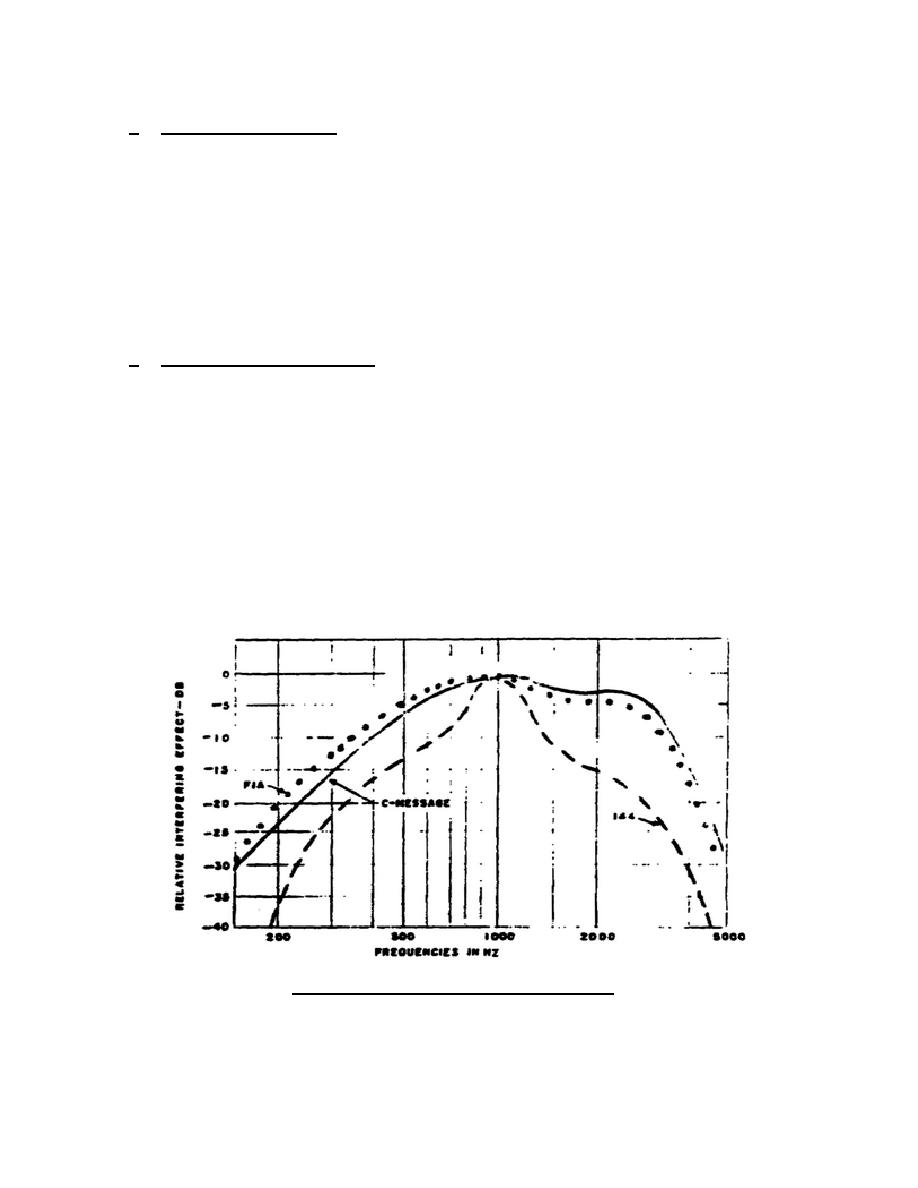
1-2. LINE OR CIRCUIT WEIGHTING
a. Weighting Networks.
The interfering effect of noise on a listener
varies with both the relative loudness and the pitch (power and frequency).
Therefore, the importance of the components of noise at the different
frequencies within the voice band must be taken into consideration in
determining the total amount of interference. Moreover, the interfering effect
varies according to the sensitivity of the receiving device that converts the
noise currents into audible sound.
For these reasons, in measuring noise on
telephone networks, it is desirable to employ weighting networks.
These
networks integrate the noise power over the voice-frequency range by giving
each small band of frequencies a weighting proportional to its contribution to
the total interfering effect.
Different weighting networks may be used to
simulate the effect of different telephone networks.
b. Line Weighting Curves.
A line weighting curve (sometimes called
circuit weighting curve) includes the attenuating effect of a typical telephone
network, including the exchange, subscriber loop, and telephone set.
The
weighting curve of a telephone receiver alone is somewhat different from the
line weighting curve. The line weighting curve is the more important one to
the circuit conditioner because it more closely approximates the average
operating characteristic of a complete telephone network.
(1) Typical line weighting curves are shown in figure 1-2. Designations
F1A, 144, and C-message weighting are terms applied to the
characteristics of telephone circuits using selected telephone
handset receiving units. The C-message weighting curve is the most
important one to the circuit conditioner because it is the most
widely used.
Figure 1-2.
Line weighting curves.
4



 Previous Page
Previous Page
